The chunky chassis of the Fox 38 is approaching its third birthday, and it retains its position as Fox's burliest single-crown fork, aimed squarely at enduro and bike-park duties.
The Performance Elite model here shares the same internals and lowers as the top-tier 38 Factory, yet forgoes the gold Kashima-coated stanchions.
Fox's GRIP2 VVC (Variable Valve Control) damper features a host of adjustments with low- and high-speed compression and rebound damping. Fox is one of a few brands that enable you to tune high-speed rebound.
The EVOL spring is tried and tested with a self-equalising positive and negative chamber. End-stroke progression is tuneable with volume spacers.
Fox’s 38 chassis has plenty of features to improve performance, including Fox's air bleeder valves to help prevent unwanted progression and bypass channels to keep bushings and foam rings lubricated.
The fork tips the scales at 2.46kg and delivers 170mm of travel in both the 29in and 27.5in (650b) sizes. Each size has a 44mm offset.
Fox 38 Performance Elite suspension fork details and specifications
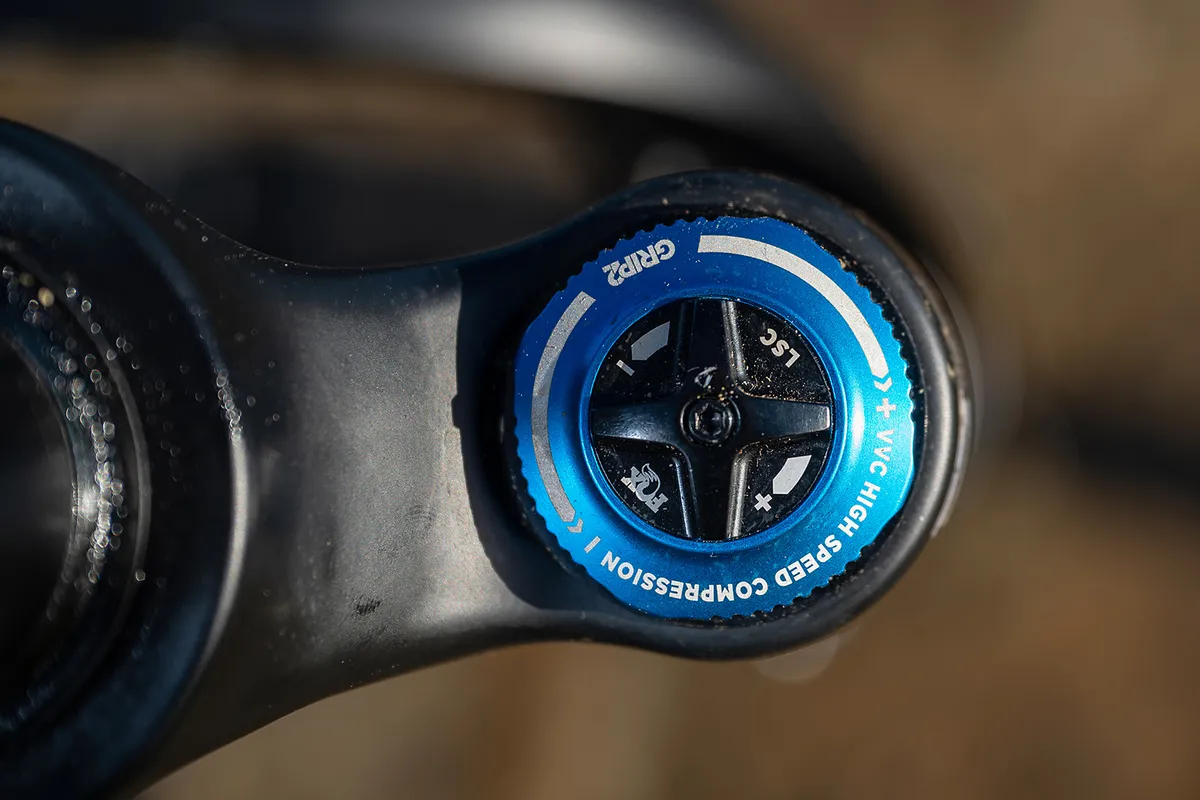
The GRIP2 damper has been kicking around for a while now, but it's seen rolling updates. The latest GRIP2 VVC damper features both low- and high-speed compression and rebound damping.
The low-speed compression and rebound damping is controlled by orifice valves, which use a needle to restrict the flow of oil through a port. More damping reduces the flow of oil through the port. Think of it as closing the valve on your sink tap. Less water can pass through, and you slow the flow down or stop it completely.
The Variable Valve Control damper has changed how it controls the high-speed compression and damping. The high-speed damping is typically controlled by shims that cover ports, which regulate oil flow during high shaft speeds.
Usually, pre-loading these shims is how fork designers add or reduce high-speed compression damping. However, Fox's GRIP2 VVC damper uses a leaf spring design to change the leverage of the shim stack.
Positioning the leaf differently (by turning the high-speed damping dials) effectively makes it easier or harder for the shims to move, thereby increasing or decreasing damping.
Fox claims this gives more sensitive damping over smaller bumps (low oil flow), yet increases the damping for bigger hits (high oil flow).
Chassis details
The Fox 38 has a stout chassis with plenty of features designed to improve performance.
There are bleed valves on the rear of the lower leg. These buttons enable the air in the lower legs to equalise with the outside atmosphere, with a quick press. This prevents air pressure build-up in the lowers because increased air pressure reduces sensitivity and the ability of the fork to use full travel.
As the fork compresses, it's not only the air in the springs that gets compressed. The same is true for the air in the lowers. The bypass channels help increase the air volume in the lower legs to prevent unwanted ramp-up. They also enable open-bath oil in the lowers to better circulate to lubricate the bushings and foam rings.
The axle uses a floating sleeve that makes up for any difference in hub-width manufacturing tolerances. This enables the lower legs to align with the stanchions to reduce potential friction once you clamp the wheel.
Fox has added a couple of weight-saving measures, while trying to maintain stiffness. These include an elliptical steerer, which places material where it's most helpful in improving fore-aft strength, while removing it where it's not needed.
The lower leg arch has also been designed to remove all unnecessary material.
Even with these measures, the Fox 38 Performance Elite weighs 2.46kg.
Floating on air
Fox's Float EVOL spring uses a self-equalising positive and negative air chamber. Fox claims it has a large negative spring volume to improve small-bump sensitivity.
The spring is designed to have a linear spring curve with more mid-stroke support than rival forks. At the same time, the progression is tuneable with volume spacers. You could install a new airshaft if you wanted to adjust the travel from 160 to 180mm.
Fox 38 Performance Elite suspension fork performance
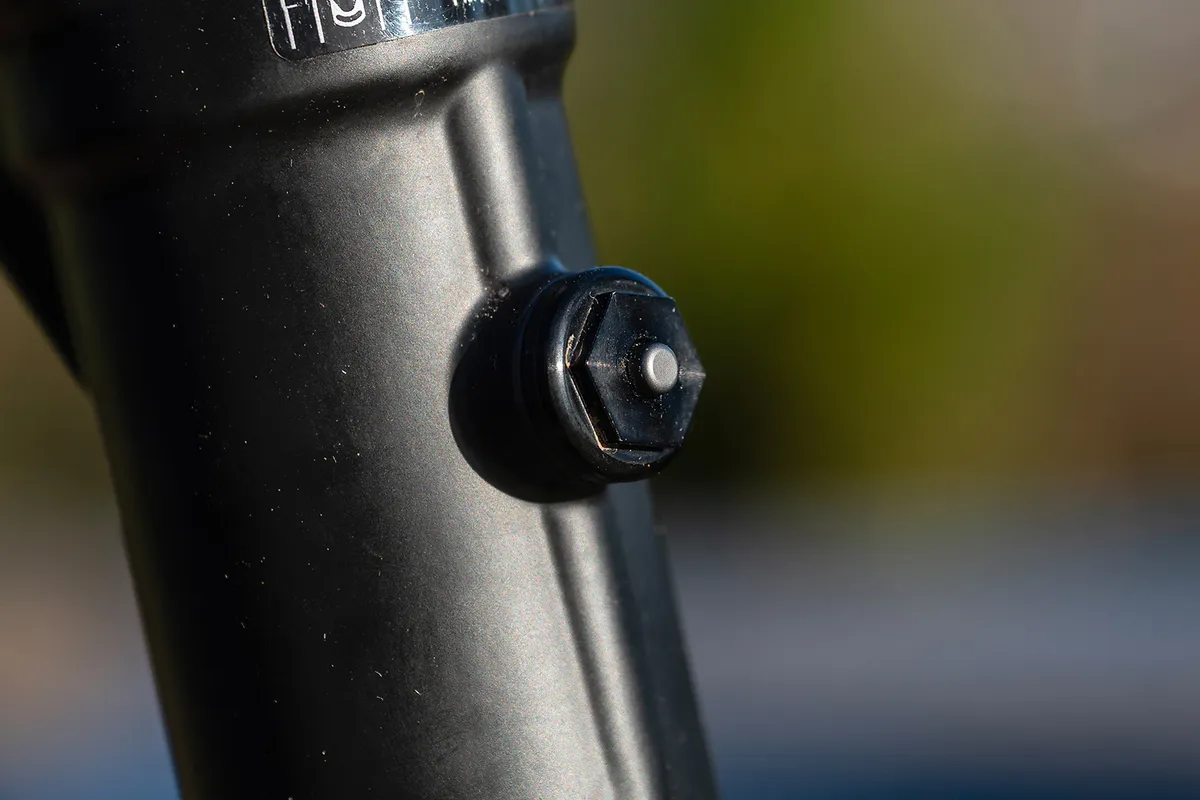
Fox 38 Performance Elite setup
I'm familiar with Fox's GRIP2 damper and EVOL air spring, so it took me only a short time to get the forks dialled in to my preferred setting.
I ran 88psi, which is a few psi less than recommended by Fox's setup guide, and left the two stock volume spacers in to add progression. I find this provides the best balance of support and sensitivity for my 76kg weight, and gives around 20 per cent sag.
Compression settings were simple, and I ran low- and high-speed compression fully open. The low-speed rebound was set to fully open, and the high-speed rebound was set at nine clicks from closed.
Different riders – of varying weight, ability, height and other factors – will have different needs. This means the characteristics of certain forks are going to better suit some riders than others.
In the case of the Fox 38, my personal preferences for lighter damping, and my relatively low weight, meant I had to run the compression and rebound damping almost fully open.
Fox 38 Performance Elite ride feel
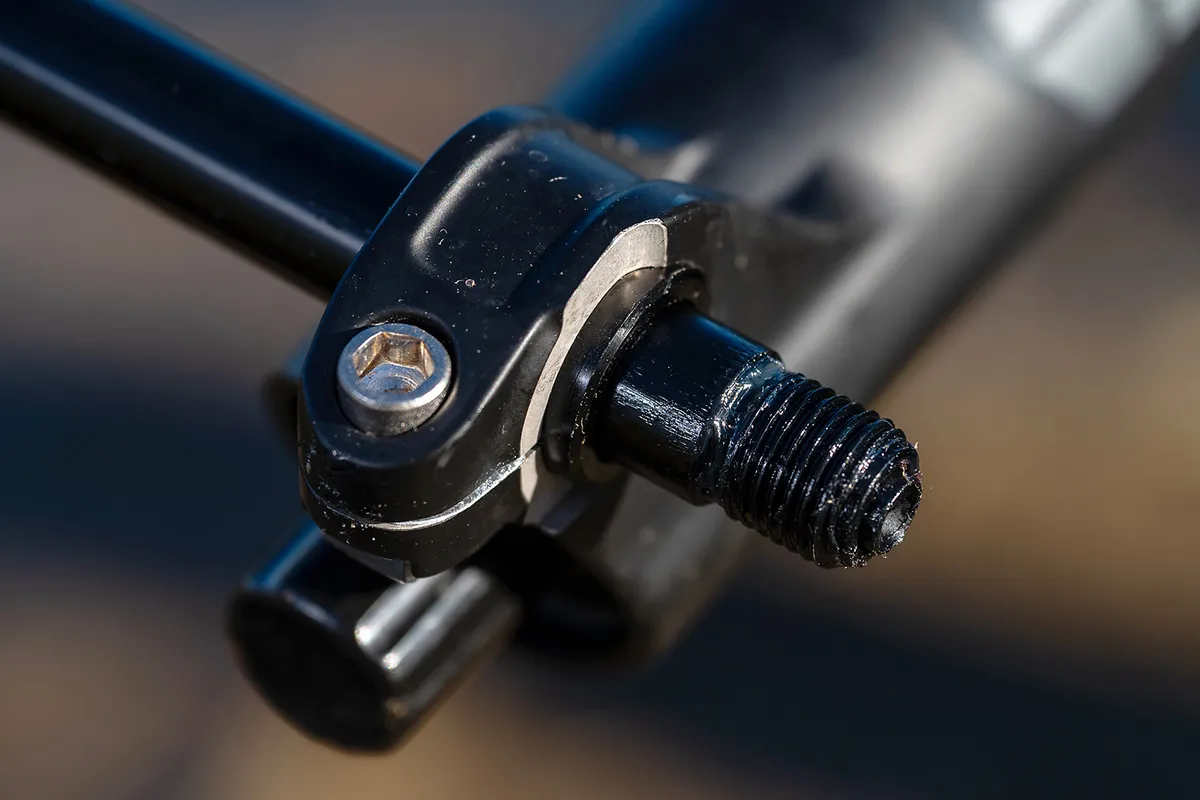
There are a lot of positives with the Fox 38 Performance Elite. The fork helps you carry plenty of speed down the trail and isn't timid over the roughest terrain or gnarliest sections.
The spring in the Fox is impressive at generating mid-stroke support, helping prop the fork up in its travel, and saving it when needed. In addition, there is plenty of plushness as the 38 Performance Elite moves deep into its travel without ramping up to a harsh spike.
This is great for delivering support in high-load turns and through compressions where the bike's front end remains calm and stable.
The sensitivity of the spring is moderate as the fork moves into the initial part of its travel, and it does an admirable job of smoothing out chattery trails. However, the Fox is best when hitting bigger bumps, and its ability to soak up square-edge hits and not transfer feedback through the handlebars is decent.
As good as the spring is, though, the fork's damping could work better for a wider range of rider weights. I had to run both compression adjusters fully open, and also the low-speed rebound, to get the sensitivity and rebound speeds I prefer.
I feel the GRIP2 is over-damped to deliver the sensitivity needed for lighter-weight riders, but it will probably work well for heavier riders wanting more support.
At middling to low spring air pressures, such as those I run, the rebound speeds are too slow to track the ground as impressively as a RockShox ZEB Ultimate, for example. This gives the Fox a slightly more sluggish feel.
I found the GRIP2 has plenty of compression damping without the need for winding on any of the adjustments. Combined with the slow rebound speeds even at relatively high spring pressures, this highly damped performance gives the Fox a slightly harsher ride feel than the Formula Selva R, which offers more comfort.
While this support is great for carrying speed, it limits traction through unsupported corners and over root spreads.
The 38's burly chassis gives a very commanding ride feel on the trail. You can point the Fox in any direction and it will hold its line accurately. I didn't find it bounced me off line or was overly fatiguing. However, you get more feedback over sustained descents than other I've tested due to the damping and the stiff chassis.
How does the Fox 38 Performance Elite suspension fork compare to the RockShox ZEB Ultimate RC2?
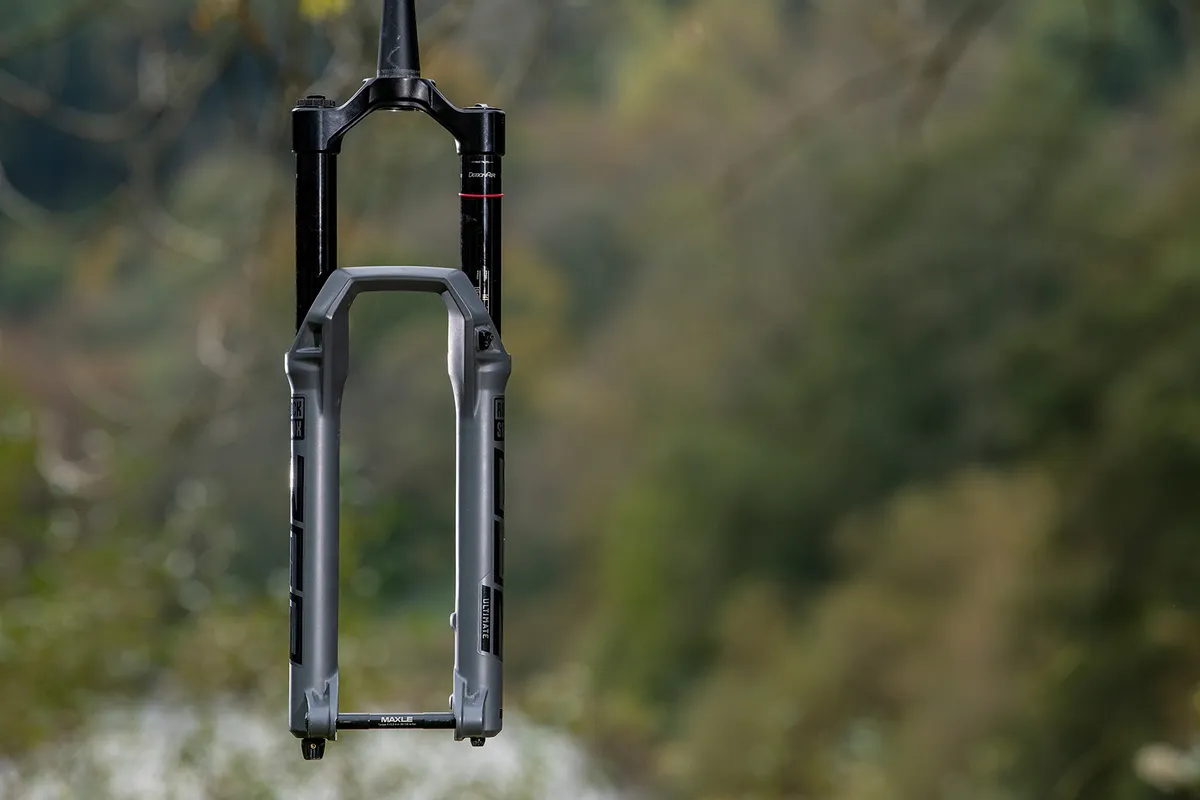
These two forks are possibly each other's biggest rivals. If you're a lighter-weight rider, I recommend the ZEB because it has a more usable range of compression and rebound damping.
The Fox delivers more mid-stroke support than the RockShox, but doesn't offer the same ride comfort. Smaller bumps and hunting traction is where the RockShox shines, while the Fox takes the crown for dealing with bigger compressions and harsher hits.
Both forks are very plush and capable, though, and the handling differences between them are negligible. Both will track lines well and have more than enough stiffness for 99 per cent of riders.
If you're a rider who prioritises support, I recommend the Fox. However, if you prefer traction and comfort, the ZEB is best.
Fox 38 Performance Elite suspension fork bottom line
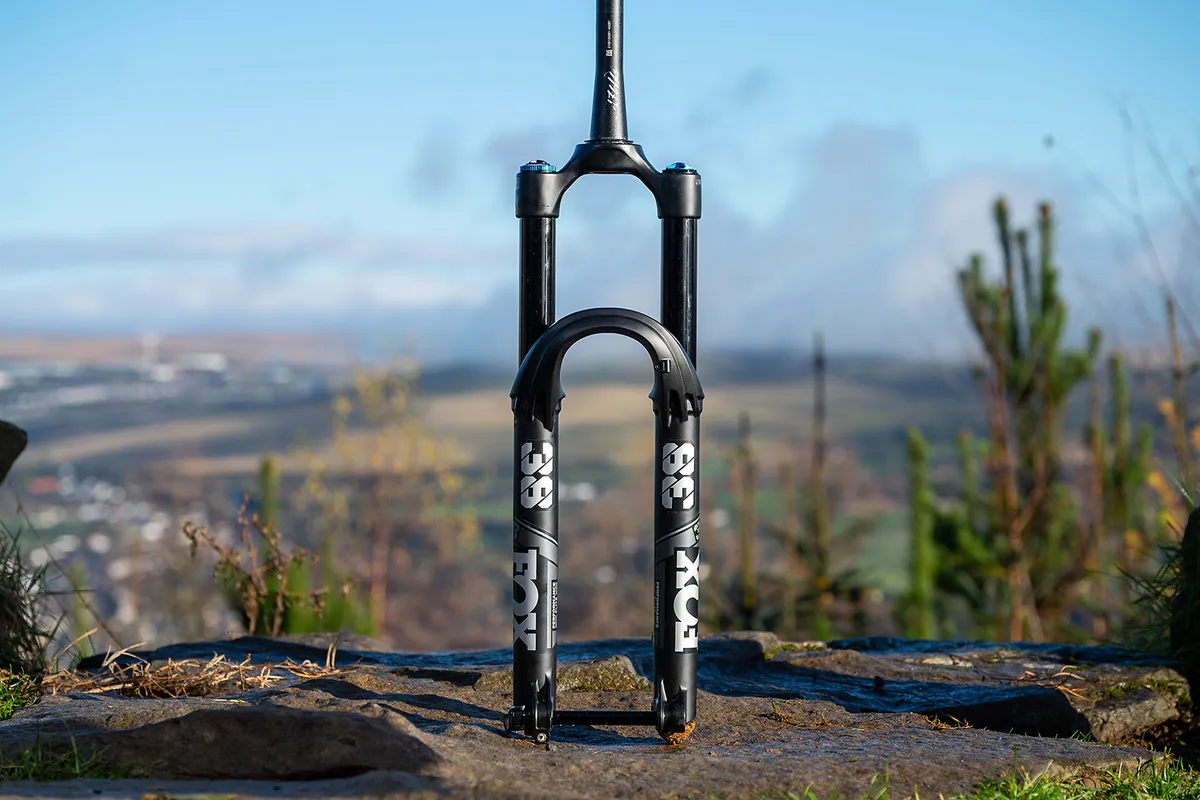
The Fox 38 Performance Elite is an impressive piece of kit. However, it has a few flaws with its firm damping, which limits its use for average and lighter-weight riders.
It works best when being pushed hard and fast, soaking up the biggest bumps. In slower, more technical trails, its damping prevents it seeking out maximum traction.
How we tested
The best mountain bike suspension forks are a pricey upgrade, but are one of the most important parts of a bike. They influence performance greatly, contributing to handling, comfort and control.
In addition, forks are one of the first big upgrades riders buy, so picking the right one is essential.
We tested seven forks that cover a wide range of price points.
The forks were put through their paces on both the black and rough red trails at BikePark Wales, repeating laps to make testing as consistent as possible.
Forks on test
- Fox 38 Performance Elite
- DVO ONYX SC D1
- EXT ERA V2
- RockShox ZEB Select review
- Cane Creek Helm MkII
- Manitou Mezza Expert review
- Formula Selva R
Product
| Brand | Fox |
| Price | £1239.00 |
| Weight | 2460g |
Features
| Spring type | air |
| Lockout | no |
| Wheel size | 29in_700c |
| Axle | 110x15 quick release, locking nut |
| Damper adjustments | External low and high-speed compression, external low and high-speed rebound |
| Offset | 44.0000 |
| Offset | MILLIMETER |
| Travel | 170.0000 |
| Travel | MILLIMETER |
| Features | Spring: Air – Self-equalising positive and negative chambers Brake mount: 180mm Wheel size: 29in, 27.5in Offset: 44mm (27.5+in/29in) Travel: 170mm |
